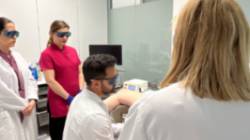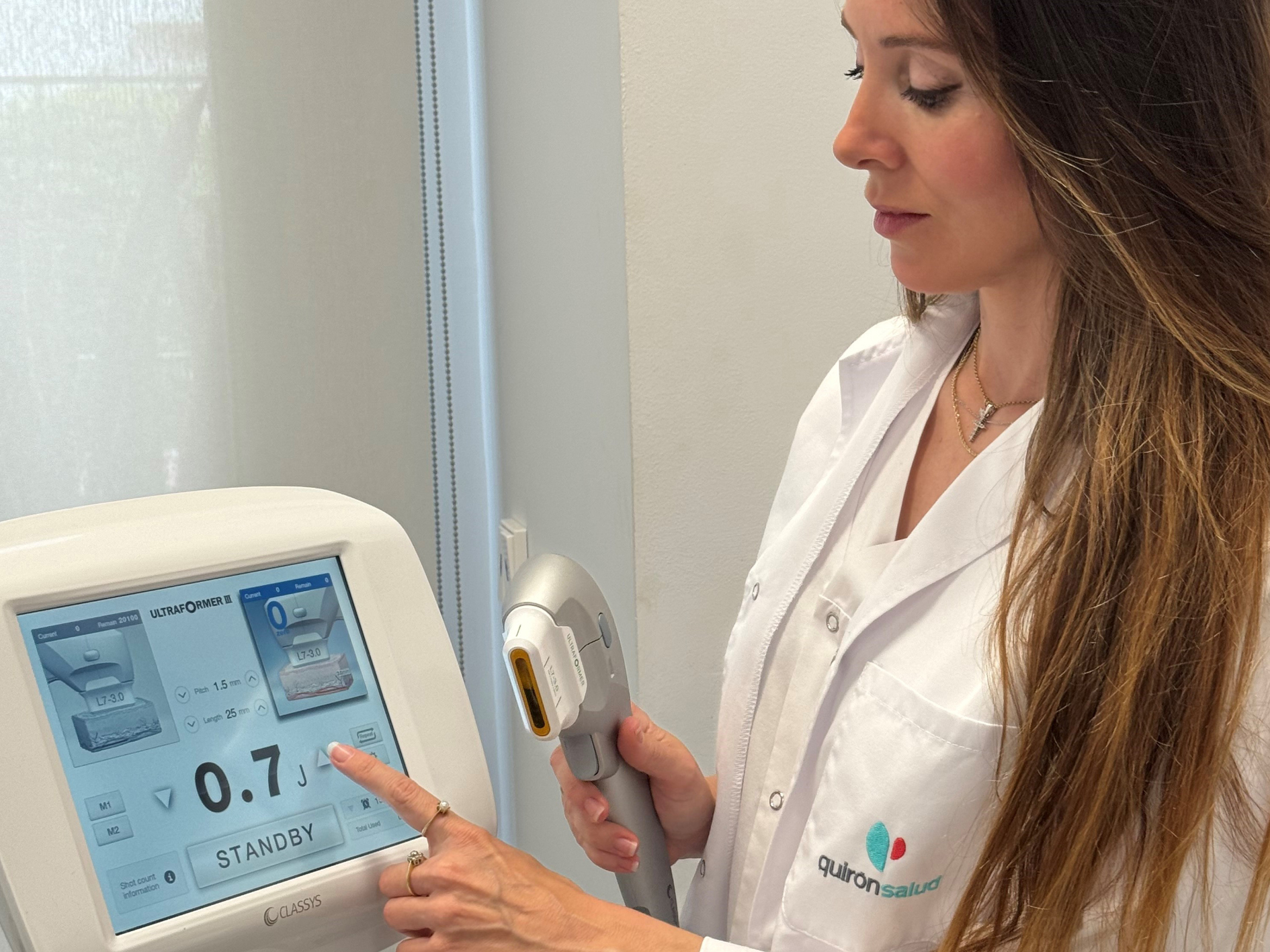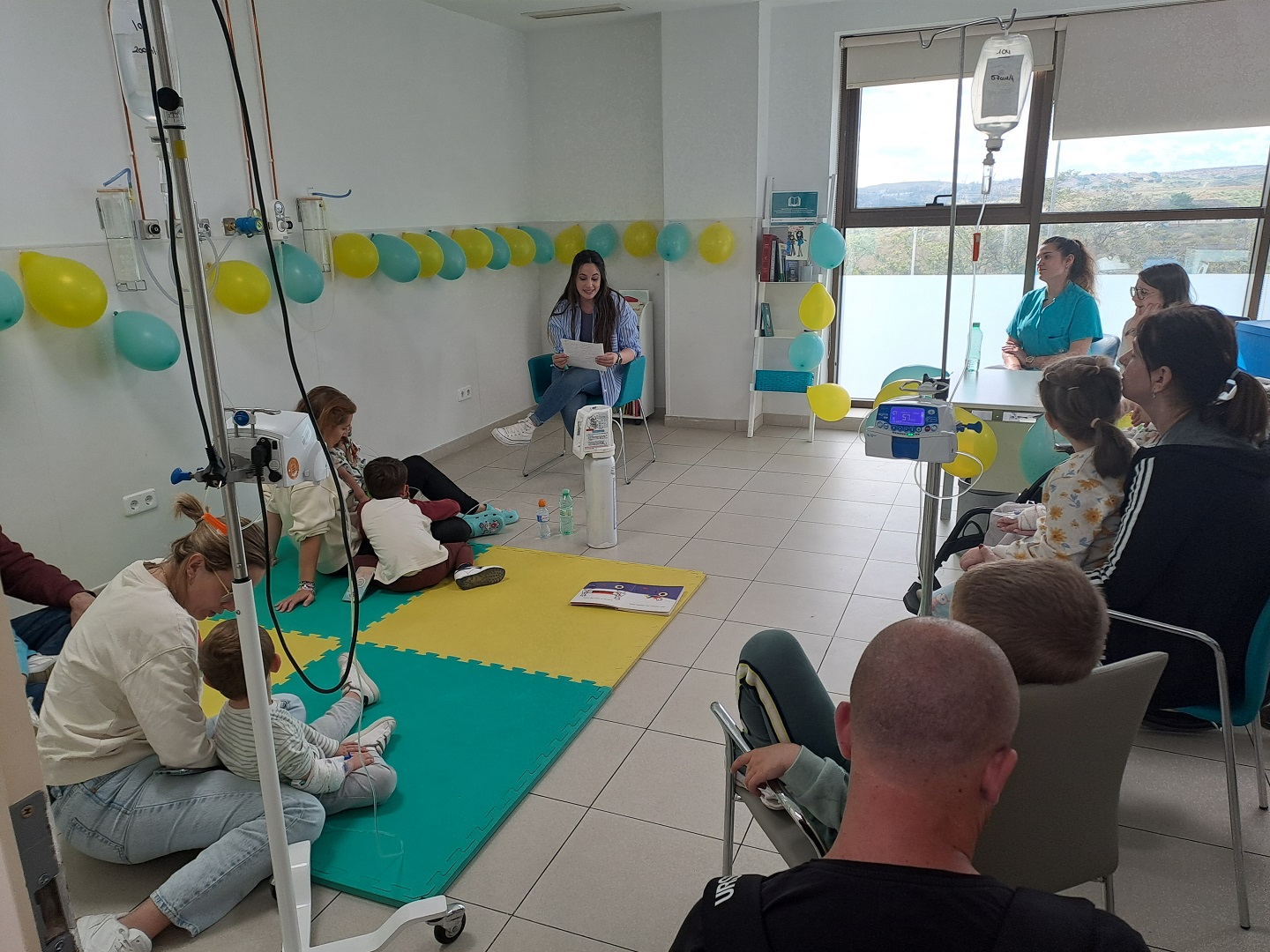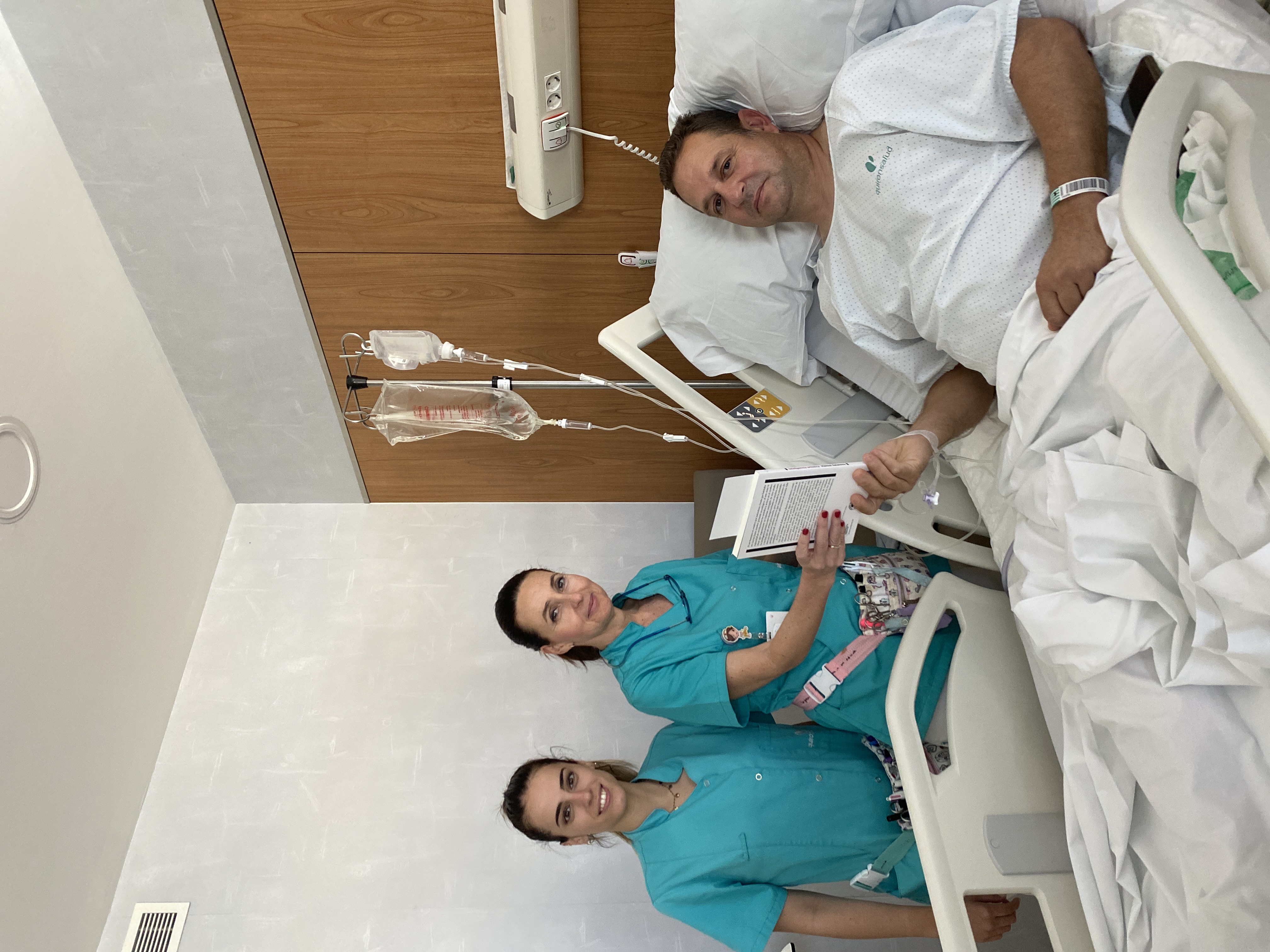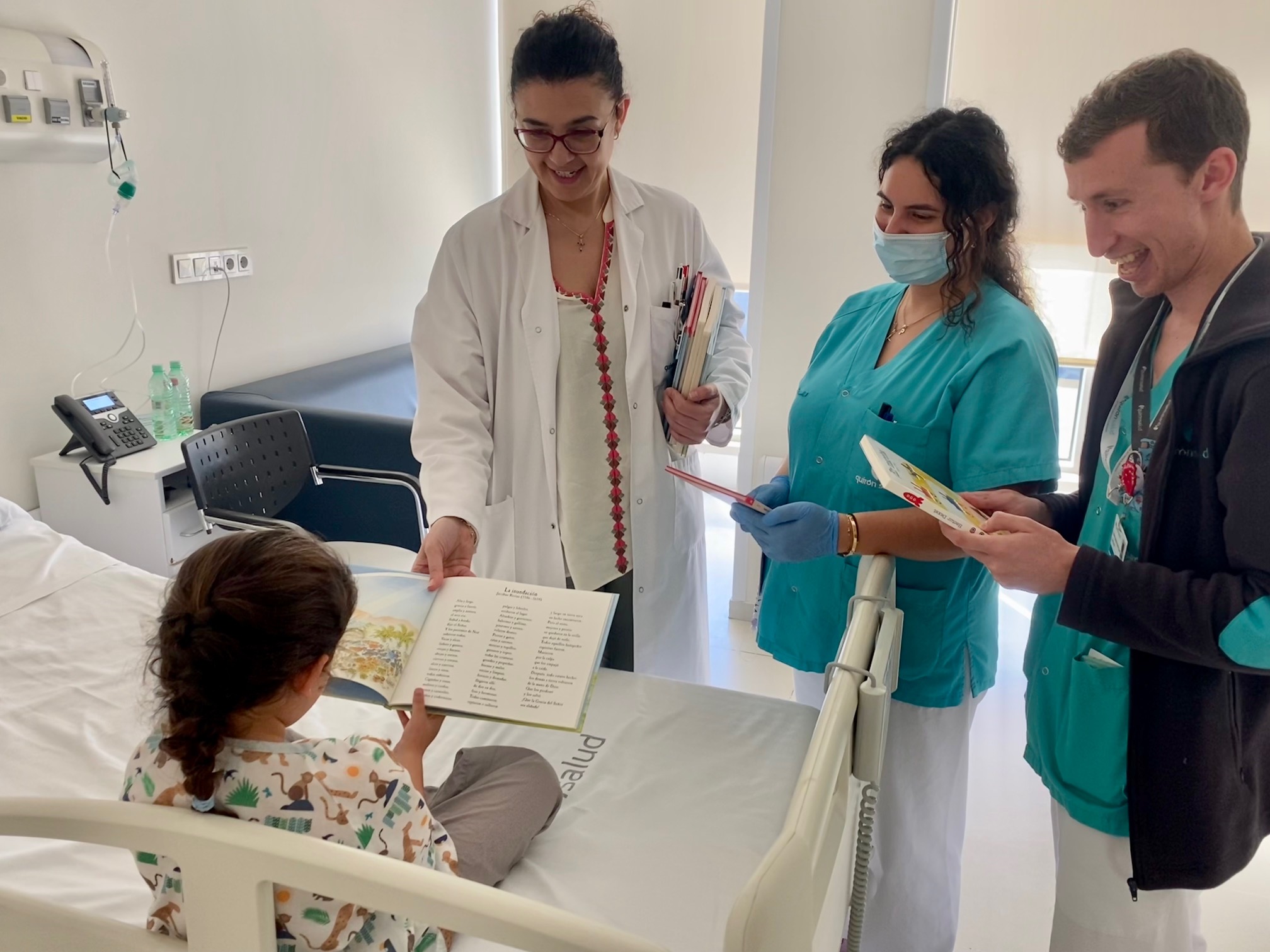Neuroimaging shows that cognitive behavioral therapy in patients with schizophrenia markedly improves the disease
A recent study by the team of Biomedical Engineering and Radiology of Hospital Quirónsalud Valencia shows that cognitive behavioral therapy produces significant changes in the way in which patients activate some brain areas and process information or certain external stimuli. "For the first time we have been able to objectify quantitatively the benefits that this type of therapies have in patients with schizophrenia and auditory hallucinations," says Dr. Gracián García, a biomedical engineer at the center.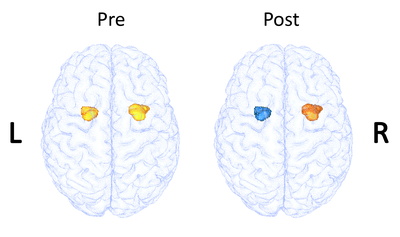
"Changes in the functional activation of the cerebral amygdala in a patient with schizophrenia before performing cognitive behavioral therapy (left) and after (right)"
The objective of this work has been to demonstrate, through the use of quantitative techniques of functional neuroimaging, which are the effect and the utility of applying cognitive behavioral therapies in combination with the usual pharmacological treatments in patients with schizophrenia and auditory hallucinations. A total of 40 patients with schizophrenia and a group of 14 healthy subjects participated voluntarily. The patients were divided into two groups: one with patients who followed the standard pharmacological treatment and another in which, in addition to drugs, the patients underwent different sessions of cognitive behavioral therapy.
Parallel to these sessions, functional magnetic resonance scans were carried out to assess the brain's response to auditory stimuli with a high emotional load. "To date it is not possible to ensure that a patient suffers from schizophrenia only with the observation of MR images, because the affectation that occurs in the cerebral anatomical substrate is practically imperceptible. However, with advanced neuroimaging techniques of higher quality and resolution, it is possible to observe subtle changes in the structural and functional organization of the brain in these patients ", emphasizes Dr. Luís Martí Bonmatí, head of the Diagnostic Service for Imaging and Biomedical Engineering of Quirónsalud Valencia.
The study has shown that the emotional brain response of patients is much improved if traditional drug treatments are combined with therapy sessions. "This improvement occurs mainly because certain areas of the limbic system of patients, including the amygdala, behave differently. Follow-up studies on these changes in emotional regulation have shown that treatment withdrawal rates can be reduced and potential relapse prevented, especially in chronic patients, "said Dr. García.
The study was carried out in a coordinated manner with the Biomedical Research Center in Mental Health Network (CIBERSAM), the University of Valencia, the Hospital de la Santa Creu i Sant Pau in Barcelona and the Universities of Durham and Newcastle, United Kingdom. The work has recently been accepted for publication by the high-impact specialist journal Schizophrenia Research.
About schizophrenia
Schizophrenia is a serious mental disorder that affects approximately 1 in every 100 inhabitants. Nearly 21 million patients in the world have this disease. Its manifestations include hallucinations, including distortion of thoughts, emotions or language itself. In addition, in many cases this chronic psychosis usually appears in the early stages of life, so the associated social and economic costs are considerable. All this generates a remarkable social and scientific interest for the development and application of techniques that improve the diagnostic accuracy, the quality of life and the prognosis of these patients.
Current events
Current events
- 25 de abril de 2024
La Fundación Jiménez Díaz ofrece consejos para controlar los síntomas del acúfeno y educar al cerebro...
Hoy se celebra el Día Mundial de las personas con AcúfenosHospital Universitario Fundación Jiménez Díaz - 25 de abril de 2024
El Materno-Infantil Quirónsalud Sevilla incorpora el tratamiento láser para la regeneración y la mejora...
Trata patologías como el dolor durante las relaciones sexuales, la sequedad, la atrofia o la incontinencia urinaria, así como lo relacionado con la estética genitalHospital Materno-Infantil Quirónsalud SevillaObstetricia y Ginecología - 25 de abril de 2024
El Hospital Quirónsalud Córdoba promueve hábitos de vida saludables entre los adolescentes
Profesionales del centro participan en el programa Stay Healthy de la Fundación Quirónsalud, a través de talleres sobre sueño, salud mental, adicciones a sustancias, nutrició...Hospital Quirónsalud Córdoba - 24 de abril de 2024
La Fundación Jiménez Díaz aborda el binomio pantallas y salud y analiza los riesgos de su uso inadecuado
El hospital madrileño celebra la tercera sesión de su ciclo de debates en Responsabilidad Social Corporativa “Salud, Personas y Sociedad. FJD Talks”Hospital Universitario Fundación Jiménez Díaz - 24 de abril de 2024
Ultrasonido de alta intensidad, el innovador tratamiento sin cirugía de rejuvenecimiento facial que no...
• Basado en ultrasonidos, no deja signos visibles tras el tratamiento por lo que permite hacer vida normal horas después de la sesión y se puede aplicar en los meses de veran...Hospital Quirónsalud Marbella - 24 de abril de 2024
Quirónsalud, Servicio Médico Oficial del Premier Padel Andalucía Sevilla P2
El torneo, que se disputa del 28 de abril al 5 de mayo, reúne a las principales figuras de este deporte, a nivel nacional e internacional.Quirónsalud - 24 de abril de 2024
El Hospital Quirónsalud Toledo celebra el Día del Libro con la lectura de ‘Las aventuras de Kenko’
Evadir del ámbito hospitalario, hacer disfrutar con la lectura y fomentar los hábitos saludables, los objetivos de la iniciativa.Hospital Quirónsalud ToledoPediatría y sus Áreas Específicas - 24 de abril de 2024
El Centro Médico Quirónsalud Valdebebas ofrece la posibilidad de conocer la edad metabólica
· Durante los viernes 26 de abril y 10 de mayo en horario de 9.00 a 14.00 horas y los miércoles 8 y 22 de mayo en horario de 15.00 a 20.00 horas. · Las personas interesadas q...Centro Médico Quirónsalud ValdebebasEndocrinología y Nutrición - 23 de abril de 2024
Quirónsalud Infanta Luisa celebra el Día del Libro con sus pacientes hospitalizados para promover los...
Quirónsalud Infanta Luisa regala libros a sus pacientes hospitalizados buscando amenizar así su estancia hospitalariaHospital Quirónsalud Infanta LuisaLogopedia - 24 de abril de 2024
El Hospital Quirónsalud Badalona incorpora un nuevo servicio de Teledermatología para acelerar el diagnóstico...
El nuevo servicio agiliza la atención y respuesta médica, en 48 horas, posibilitando una actuación rápida sobre las lesiones que presenten indicios de malignidad.Hospital Quirónsalud BadalonaDermatología Médico-Quirúrgica y Venereología - 23 de abril de 2024
La Fundación Jiménez Díaz obtiene la acreditación de calidad más reconocida en estudios genéticos, la...
La acreditación, otorgada por la ENAC, refleja la calidad y buenas prácticas del Departamento de Genética del hospitalHospital Universitario Fundación Jiménez Díaz - 22 de abril de 2024
La Fundación Jiménez Díaz obtiene la certificación de calidad más avanzada en sus servicios de UCI Quirúrgica,...
La acreditación es una norma internacional de gestión de la calidad de los cuidados críticosHospital Universitario Fundación Jiménez Díaz - 23 de abril de 2024
Quirónsalud Málaga celebra el Día del Libro con sus pacientes
El personal de Enfermería ha repartido ejemplares cortesía de la Fundación Quirónsalud.Hospital Quirónsalud Málaga - 23 de abril de 2024
Celebramos Sant Jordi con Parada de libros y reparto de rosas
Hoy 23 de abril celebramos Sant Jordi en Quirónsalud Barcelona con el tradicional reparto de rosas y por primera vez con el estreno de una parada de libros tanto para trabaja...Hospital Quirónsalud Barcelona - 23 de abril de 2024
El Hospital Quirónsalud Campo de Gibraltar regala libros a sus pacientes por el Día Internacional del...
El centro de Palmones promueve la lectura entre sus pacientes hospitalizados para tratar de hacer más amena su estancia en el hopspitalHospital Quirónsalud Campo de Gibraltar



